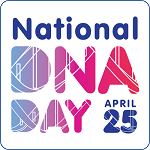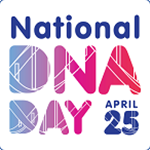How Well Do You Know Your DNA?
 This April 25 marks the 14th annual National DNA Day, an event organized by the US National Human Genome Research Institute (NHGRI) to commemorate the completion of the Human Genome Project in April 2003, as well as the discovery of DNA’s double helix in 1953. An interactive map on the NHGRI website shows that more than 70 DNA Day events are taking place around the United States this year, with participants including Kerafast providing institutions such as Penn State University, University of Iowa and Montana State University.
This April 25 marks the 14th annual National DNA Day, an event organized by the US National Human Genome Research Institute (NHGRI) to commemorate the completion of the Human Genome Project in April 2003, as well as the discovery of DNA’s double helix in 1953. An interactive map on the NHGRI website shows that more than 70 DNA Day events are taking place around the United States this year, with participants including Kerafast providing institutions such as Penn State University, University of Iowa and Montana State University.
In honor of the event, we decided to compile some fun facts about thehuman genome, so you can see how well you truly know your DNA:
- All people, despite race, ethnicity, or gender, are 99.9% identical when it comes to their DNA.
- If you were to extract DNA from one cell, uncoil it, and stretch it out, it would be over 5 feet in length. If the DNA from all the cells in your body were uncoiled and lined up, it would stretch 10 billion miles, the equivalent of 6,000 trips from Earth to the moon and back.
- The human genome contains approximately three billion base pairs, enough to fill 200 1,000-page New York City telephone directories.
- Most of the DNA in a cell is packaged as chromosomes in the cell nucleus, but some DNA is found within the mitochondria. Mitochondrial DNA is inherited from an individual’s mother and contains 37 genes that regulate mitochondrial function.
- Anywhere from 5% – 8% of the human genome is actually comprised of viral DNA. Viruses began inserting their DNA into our ancestor’s genome approximately 40 million years ago.
Are there any other DNA facts you find interesting? Let us know on Twitter or Facebook! And if you work in this area of research, check out our reagents for studying DNA damage and repair, such as the DNA-RNA hybrid [S9.6] antibody, NIH 3T3 translocation cell lines and DNA-binding fluorescent probes.



